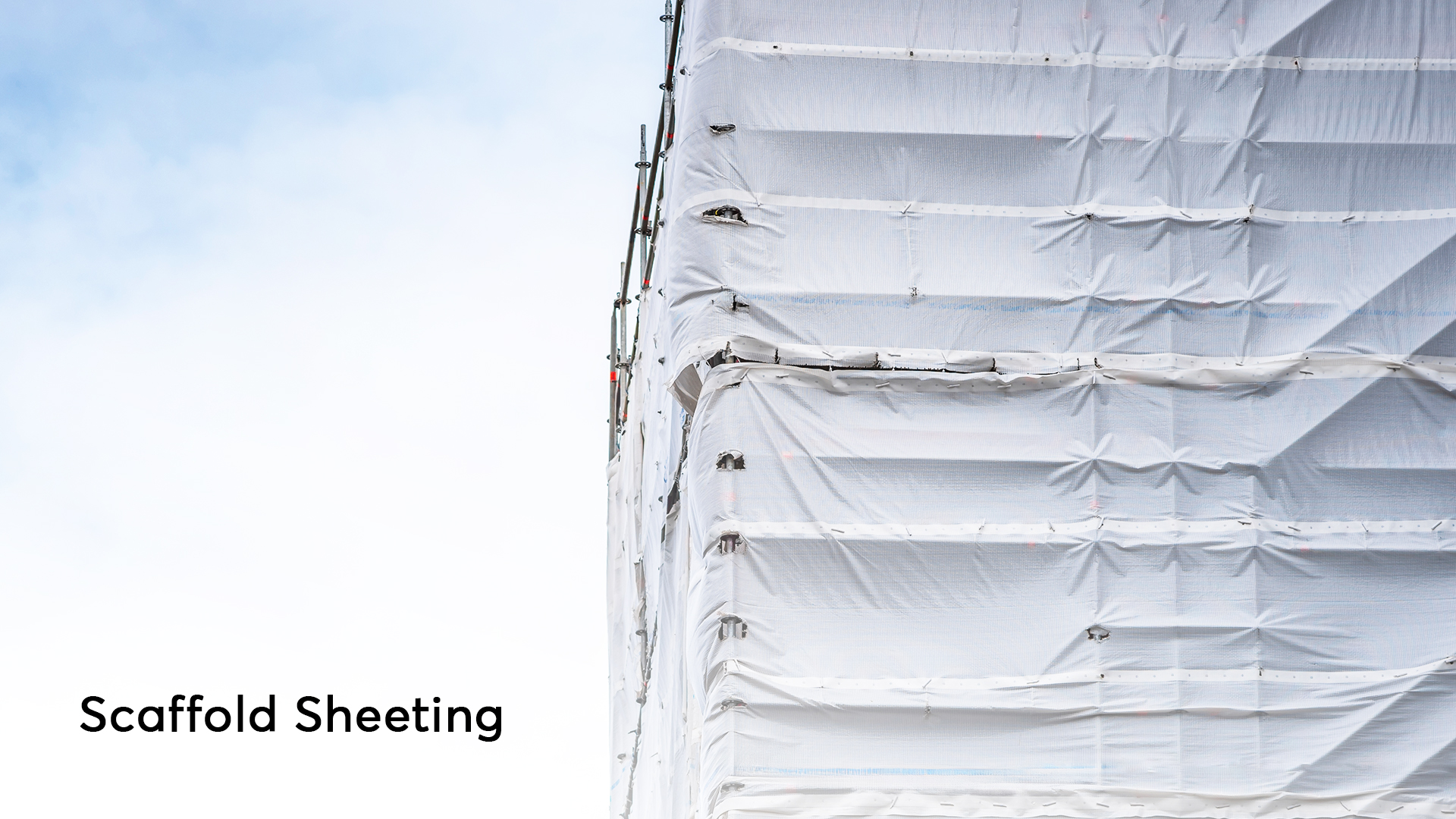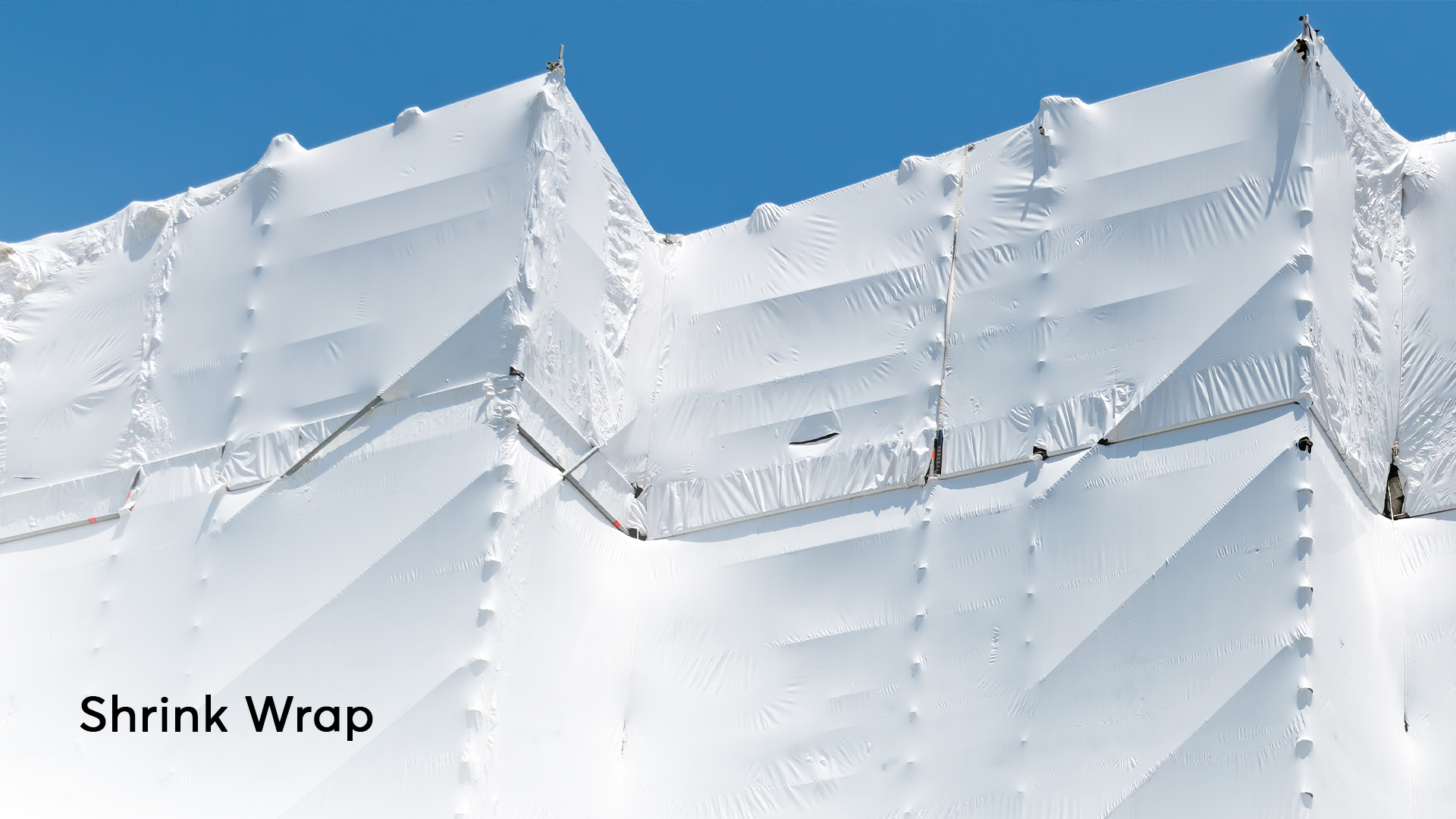A scaffolding setup isn’t complete without a protective covering attached to its framework.
Debris nettingis a common choice on construction sites to meet this requirement, but other options like scaffold sheeting and shrink wrap are also available. How does debris netting compare to these alternatives? Keep reading to find out!

Debris Netting in Construction
If you pass by a construction site and see a green material attached to a scaffold, a framework system fixed to a wall or building, that’s likely debris netting. It’s so common that it’s the standard choice for most builders and contractors when it comes to guarding material, as its name suggests.
Alternatives such as scaffold sheeting and shrink wrap are also commonly used as they share a similar purpose to debris netting. Understanding the differences between these options will help you easily choose between netting and sheeting. This knowledge is useful whether you’re starting out in the construction industry or simply a curious passerby.
Note: Our guide, “Scaffolding Protection for Workers and Pedestrians from Falling Debris,” provides detailed information on the importance of covers such as debris netting for keeping both workers and the public safe.
Debris Netting in Material and Design
One way to identify and differentiate debris netting is by looking at its material and design. High-density polyethylene, polyester, and polypropylene are the main materials used for debris netting. These are often treated with UV inhibitors to improve weather resistance and extend their lifespan.
However, debris netting is not different from scaffold sheeting and shrink wrap in terms of material, as all use the same durable plastics for heavy-duty applications.
What sets debris netting apart from the other two is its knitted mesh design. This allows air to pass through while containing debris falling from heights. Its main goal is to keep workers and pedestrians (or anyone passing near the site) safe from falling objects. But that’s not all — the mesh structure can catch workers themselves in case of a fall.
In contrast, scaffold sheeting and shrink wrap offer complete coverage without any holes. This makes both more effective in containing even the tiniest debris, insulating the work area from the weather, and keeping any waste or hazardous materials from escaping the site. They’re often in white, and their solid sheet appearance makes them easier to identify from afar. Whereas the open patterns of debris netting allow you to see through it.

Debris Netting in Installation
There are several ways to attach debris netting to a structure, such as scaffolding poles, which are similar to the methods used for installing scaffold sheeting. The most commonly used fasteners are toggle ties, cable ties, zip ties, bungee clips, and scaffolding clips.
The netting can be seen draped over the scaffolding, with the mesh forming overlapping sections. Once installed, it looks like a web of lines from a distance due to its mesh design. Scaffold sheeting is stretched over the scaffolding poles. It creates a smooth, solid cover that wraps around the entire framework.
On the other hand, shrink wrap is applied using a heat weld tool like this shrink gun with regulator and hose. It undergoes a process called biaxial shrinking, where it shrinks in every direction. This creates a taut covering that conforms to the shape of the object or structure.
Read our guide to ‘The Basics of Shrink Wrap for Scaffolding’ to learn more.
Debris netting serves similar yet different purposes as scaffold sheeting and shrink wrap. Understanding these differences can help you compare and choose the right one for your project.
For more information on scaffold protection, shrink wrap, scaffold sheeting, or monarflex alternative, contact us at +44 (028) 9442 8611. SP Group is a scaffold supplier based in UK and Ireland.
